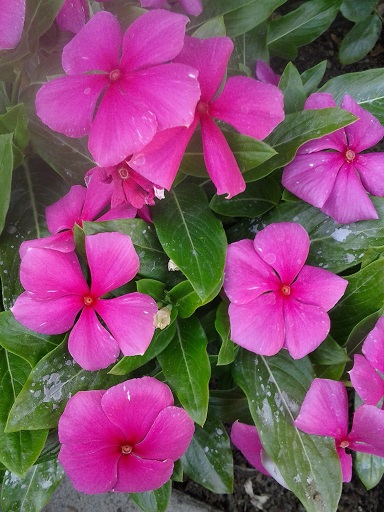UNITED STATES—Some of the most convenient bird feeders in the garden are some of the many plants we grow. Since so many plants exploit the birds as much as they get exploited by the birds, they naturally produce something that the birds want, when they want it. Right now, meaty seeds cater to migratory birds that need to plump up to travel, hoping that some of the seeds get dropped elsewhere or buried for later (hence ‘sown’ if forgotten, as they often are).
Since the climate is so mild, there is always something blooming to provide nectar for both migrating and overwintering hummingbirds, which inadvertently pollinate the flowers that feed them. Later in the winter, colorful berries feed hungry overwintering birds, in exchange for the dispersion of the small seeds within. (Digestion of the seeds does not harm them, and promotes germination.) Robins do not seem to do much for the garden, but certainly do enjoy digging for worms in unraked leaf litter.
Those who enjoy birds often intentionally plant pyracantha or cotoneaster to provide berries for birds in winter. Various salvias that bloom at various times likewise make nectar for hummingbirds. Fading sunflowers can be left out this time of year until birds that eat the seeds are finished with them. Alternatively, bird feeders can actually provide more food, and extend the seasons through which such food is available. Suet feeders provide something that plants can not provide.
The problem with plants or bird feeders that attract birds is that they can also attract less desirable guests. Squirrels and rats are the worst. Some bird feeders can be protected with exclusion devices. Cats have no interest in the plants or bird feeders, but can be a serious problem for the birds, and are not so easy to dissuade. Fortunately, hawks are rarely a threat in urban gardens, especially where there are trees to inhibit their hunting from above.
Contrary to popular belief, providing food to migratory birds does not interfere with natural migration. Cooling weather and shorter days are enough to convince birds to leave. The extra food actually helps them on their way once they get going. It also helps those that naturally stay here through winter. Some birds actually migrate to here from colder regions to the north. With winters so mild, there is no need to go any further.
Highlight: Madagascar periwinkle
Like gardenia, dogwood and snapdragon, the potentially finicky Madagascar periwinkle, Catharanthus roseus, is often challenging to grow. It enjoys, but seems to prefer more humidity than it gets here. The happiest plants can get nearly two feet tall and wide in sheltered and humid spots. (They can get even larger in exposed spots in humid climates.) Yet, most of us are satisfied with relatively scrawny plants less than half a foot tall.
Madagascar periwinkle is popularly grown as a warm season annual until the weather gets too cool in late autumn, but it can tolerate a bit of cool weather, and can even survive as a perennial through winter if sheltered. The one or two inch wide flowers have five petals and small red centers, and can be white or various shades of pink, pinkish red, lavender or pastel orange. All parts of Madagascar periwinkle are incidentally toxic.







